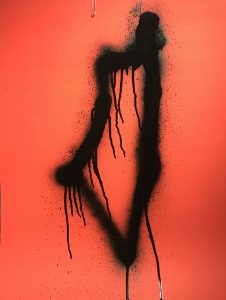Art Portfolio Item 6
ø

Throughout and after the Great Western Transmutation, a number of Islamic reform/revival movements emerged. Many Muslims interpreted the transition of political power to the West as an indication of Islamic weakness. They believed that since Islam was becoming politically weak, that means that Islamic society as a whole must have become religiously weak. The belief that low iman was contributing towards political weakness was the undercurrent contributing towards the reinterpretation of Islam. Some took on more liberal approaches to Islam, adopting an “imitative” model in which Muslim-majority countries tried to copy Western church-state relationships. Kemal Ataturk and Mohammad Ali Jinna aspired to grant citizens freedom from religion. They wanted Islam out of the politics of the country and supported liberal reforms. On the other end of the spectrum, Ayatollah Khomeini and Zia ul-Haqq adopted an Islamist reform strategy. They wanted Islam to be the political ideology of the state and enacted policies that supported religious authority. This piece takes the same conversation about the role of Islam within the nation-state and applies it to Palestine.
In Palestine, society is divided over how religion should be embodied in governing institutions, if at all. My piece uses black to represent the sunni, shari’a-based (legalistic) interpretation of Islam as I have done in other pieces (piece 2 and piece 4). I used the black to depict a map of Palestine. I do this to show how Islamist movements use religion to define the state. Religious doctrine is just as firm as borders in determining the composition of the nation. I drew the black on a red background for two reasons. First, the red is used to depict the religious violence connected to the radicalization and extremist Islamist interpretations of religion and state. When political leaders can accuse others of being religious threats to the country, they can target and demonize opposing societal factions. Second, the red demonstrates the diversity of interpretations in Palestine of the appropriate role of religion in the state ranging from Islamists to Communists.
I only drew a silhouette of Palestine and did not fill the map in because I wanted to keep the picture general. By only doing the outline, I aimed to convey that even though the disputes over religion happen to be occurring in Palestine, it is similar to the tensions that existed in Turkey, Pakistan, and many countries over the world.
I used spray paint to show that the conflict over religion does not occur only at the level of the political elite. These disputes are usually carried over to the street. Whether it’s how women dress, what children are taught in school, or what literature people are allowed to consume, the tensions over the interpretation of Islam and the state is reflected in the nation’s culture. Using spray paint shows that street art is an important battleground for these conversations.
Sources:
Asani, Ali. “Reform and Revival Movement Islamist – Pakistan” Gened 1087, 21 Nov. 2019, Harvard College.
Asani, Ali. “Reform and Revival Movements – Iran” Gened 1087, 19 Nov. 2019, Harvard College.
Asani, Ali. “Reform and Revival Movements – Turkey” Gened 1087, 12 Nove. 2019, Harvard College.
Sir Muhammad Iqbal, Complaint and Answer (Shikwa and Jawab-i-Shikwa), trans. A.J. Arberry (Lahore: Shaikh Muhammad Ashraf, 1961)
- previous:
- Art Portfolio Items 4 & 5
- next:
- Introductory Essay

